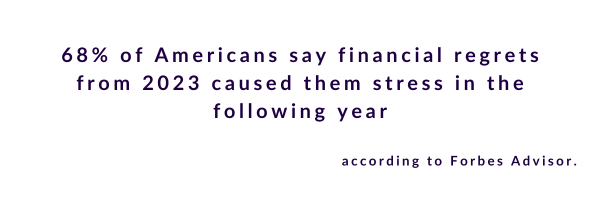Financial Literacy Month: Fundamentals of Financial Literacy. A quality benefits strategy should include financial literacy tools to better support employees.
April is Financial Literacy Month, which recognizes the role that financial education plays in a person’s long-term success and stability.
Without the right education, your employees are much more susceptible to financial hardship. According to a Forbes Advisor survey, 68% of Americans say financial regrets from 2023 caused them stress in the following year. However, compensation alone isn’t enough to cultivate a worker’s financial well-being.
Successful financial literacy requires a holistic approach, one that recognizes financial stress as a complex issue and offers many solutions to help address employee pain points. Here are the key components of a successful financial literacy strategy, plus how you can use the right benefits to improve the quality of life for your team.
1. Budgeting and saving skills are the foundation of financial literacy.
Unfortunately, 44% of Americans can’t pay $1,000 for an emergency expense from their savings. So when a financial emergency occurs, they may be forced to rely on credit cards, personal loans or other types of consumer debt. Employees need a reliable savings account to face tough financial setbacks, and building savings starts with the right budget.
Employee financial wellness programs are the first line of defense when it comes to teaching employees to budget and save. These helpful, interactive platforms teach foundational financial skills through a mixture of reading materials, interactive tools and customizable financial guidance.
These programs are in high demand among employers and workers alike. In PNC’s Financial Wellness in the Workplace Study, 80% of employees said they would stay longer with an employer that offered more financial wellness benefits.
2. Debt management skills help employees plan for a debt-free future.
Understanding how debt works is one of the most important aspects of employee financial literacy. The average American adult holds around $104,215 in debt across mortgages, auto loans, student loans and credit cards, according to data from the Federal Reserve. The average debt for Millennials alone rose more than 8% in 2023.
Dealing with long-term debt issues can lead employees to postpone other major financial decisions like buying homes, getting married or starting a family. According to a Bankrate survey, nearly 60 percent of U.S. adults with student debt have put off making important financial decisions due to that debt. Delaying major milestones puts employees behind their peers and makes it difficult to build long-term wealth.
To combat debt, employers can use a variety of strategies, including loan contribution plans and tuition reimbursement. Look for tools to help employees visualize and track the repayment process, with an emphasis on understanding interest costs.
3. Don’t overlook retirement and investing skills.
The ability to save for a secure future is one of the most important reasons to teach financial literacy. Retirement plans are core to building a solid foundation, but many Americans are still not saving enough.
According to the St. Louis Federal Reserve, in April of 2023, personal savings only accounted for 4.1% of disposable personal income. This means that Americans are saving only a small percentage of their wages, which won’t be enough to fully support a retirement plan. These numbers also represent a sharp decline from the pandemic when the majority of Americans saved upwards of 30% of their income in April of 2020. Without a proper savings plan, employees may have to work past retirement age.
While employer-sponsored retirement benefits are almost always offered to full-time employees, many workers overlook their existing benefits due to a lack of education. Use your financial literacy strategy to target retirement planning. Doing so can improve the take rate of your existing benefits and help employees feel more confident planning for the future. In a 2023 MetLife study, 62% of employees said understanding how to use their benefits would give them more financial stability.
4. A successful financial literacy strategy knows that accessibility is key.
Although online resources built to improve financial literacy are out there, it doesn’t mean they are all accurate or accessible. Education for all ages, incomes and experience levels is the most important factor for a successful financial wellness program. Even employees earning more than $100,000 a year struggle with debt and issues paying bills.
In fact, financial concerns can be completely different based on the individual’s age group. According to Business Insider, building a savings account is one of the most pressing stressors for Gen Z, while older millennials are generally more concerned about credit card debt. Both of these issues require specific solutions and it can be difficult for employees to find the answers they are looking for.
A financial wellness benefit offers an all-in-one package where employees can ask questions and learn how to avoid common pitfalls.
Best Money Moves is a mobile-first financial wellness solution designed to help dial down employees’ most top-of-mind financial stresses. As an easy-to-use financial well-being solution, Best Money Moves offers comprehensive support toward any money-related goal. With 1:1 money coaching, budgeting tools and other resources, our AI platform is designed to help improve employee financial well-being.
Whether it be retirement planning or securing a mortgage, Best Money Moves can guide employees through the most difficult financial times and topics. We have robust benefits options for employers, regardless of their benefits budget.
Our dedicated resources, partner offerings and 1000+ article library make Best Money Moves a leading benefit in bettering employee financial wellness.
To learn more about Best Money Moves Financial Wellness Platform, let’s schedule a call. Contact us and we’ll reach out to you soon.






